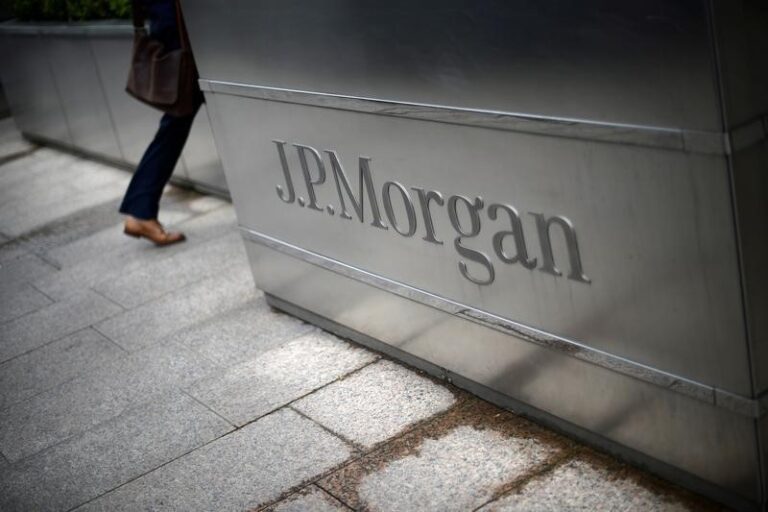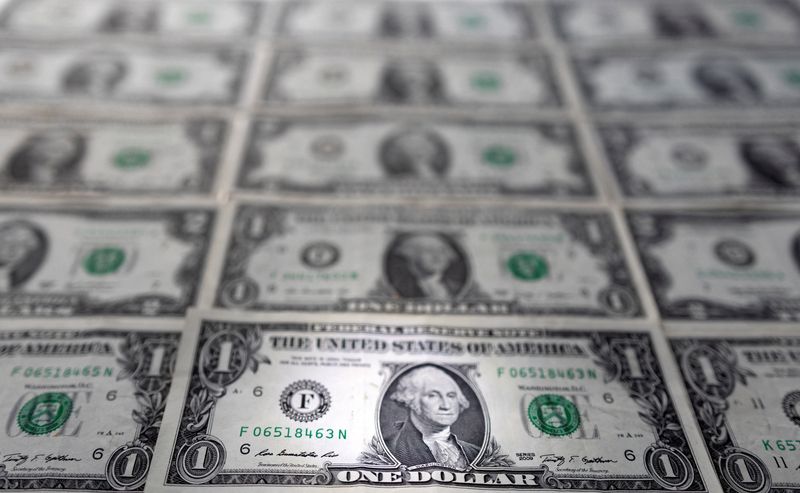

By Mike Dolan
LONDON (Reuters) – The greenback may use some encouragement.
In keeping with the “smile of the greenback” idea developed 20 years in the past by forex professional and now hedge fund supervisor Stephen Jen, the greenback usually appreciates each in instances of nice monetary stress and nice monetary turmoil. traders – however it sags in between.
This form types the “smile” and figuring out the place the world sits on this continuum at any given time will help world traders navigate many competing narratives typically.
The whole lot is smart intuitively. A rush for money and greenback liquidity throughout credit score crunch, falling asset markets or worldwide crises is properly noticed. Likewise, the U.S. economic system and inventory markets are likely to outperform throughout booms and appeal to overseas funding that enhances demand for {dollars}.
What occurs in between traditionally displays the US Federal Reserve’s relative readiness to chop rates of interest, ease credit score, and even print {dollars} in response to a recession-threatening shock on the horizon.
However it’s not straightforward to determine the a part of the smile on which we’re at any given second.
The greenback’s 3.75% plunge because the Silicon Valley Financial institution collapse this month has triggered a worldwide banking shock that has affected at the least two different regional US banks in addition to the globally systemic Credit score Suisse, is a bit complicated at first sight.
Should not durations of nice banking and credit score stress stimulate the buck?
Taking the Nice Monetary Disaster of 2008 as a benchmark, the greenback jumped greater than 10% between the Bear Stearns collapse in March and the Lehman Brothers crash in September – after which one other 12% between that and the tip of the yr.
May this nonetheless be on the playing cards? Or does the autumn within the greenback round this month’s banking shock inform us that the 2 are usually not comparable?
Asset supervisor Schröders (LON:) unchecked Jen’s idea in a barely totally different manner and recognized the mid-smile fading of the greenback as some kind of reversal of US asset market outperformance because the US economic system appears poised for a solitary slowdown.
“That is the place we’re right this moment,” Schroders portfolio supervisor Caroline Houdril and strategist Joven Lee mentioned this week. “We’re doubtlessly in a uncommon scenario the place the US may enter a recession earlier than different international locations. (However) traditionally, a recession in the US is all the time adopted by a recession in the remainder of the world.”
Their disaster in numbers put common annualized returns for the adverse 5.5% during times when the US was in recession, however not a pattern of 30 economies from the remainder of the world. Nevertheless, common greenback returns during times when the US and the remainder of the world have been contracting collectively have been truly optimistic at 4.6%.
“Whereas our economists forecast that the US economic system will enter recession earlier than the remainder of the world later in 2023, the greenback may very well be subdued till world economies observe swimsuit,” they mentioned.
Chart: Greenback, Yield Spreads and Recessions: https://fingfx.thomsonreuters.com/gfx/mkt/znpnblnzxpl/Three.PNG Chart: Actual Yields and Transatlantic Inflation: https://fingfx.thomsonreuters.com/gfx/mkt /xmvjkbelgpr/One.PNG Chart: Two-Yr Yields Pull Again: https://fingfx.thomsonreuters.com/gfx/mkt/myvmobxgnvr/Two.PNG NO LAUGHING
It could sound easy, however we simply went by a three-month interval wherein markets went from assuming a 2023 US recession to pricing in a “no touchdown” price state of affairs – then once more this month. Throughout the identical interval, they revised an anticipated long-term Eurozone recession and fully redesigned China’s economic system throughout sudden New Yr’s reopenings following strict COVID lockdowns.
Gauging cycles may be dizzying on this atmosphere.
And now we face a extreme banking disaster alongside stubbornly excessive inflation that has triggered virtually all main central banks to boost rates of interest once more over the previous week regardless of the pretty clear underlying rigidity within the credit score.
One strategy to learn the habits of the greenback is to see the brand new banking stress as merely a fruits of the previous 12 months of market turmoil and rate of interest hikes coming to an finish. The DXY has climbed over 20% within the first 9 months of 2022 in spite of everything – and has already reversed half of it.
The query is whether or not that is the start or the tip of the disaster. If it is the latter, then Fed tightening is nearly executed – as steered by the market’s response to the Fed’s newest price hike on Wednesday – and price cuts come subsequent.
One other manner to have a look at that is to guage the US banking disaster – or at the least its implications for financial institution lending to native small companies that make use of half the nation’s workforce – as a lot worse than in Europe, the place smaller banks are extra tightly regulated and the system seemingly higher at capitalization.
And if that’s the case, then the push to the Fed’s easing cycle – the place traditionally the primary reduce has all the time occurred inside six months of the final hike – is larger than in Europe.
Cash markets at the moment are pricing in a pointy crossover with the UK, for instance, and are seeing US year-end coverage charges 30 foundation factors decrease than these in Britain, regardless that they’re at present 100% increased. a half level.
Though a lot increased UK inflation performs a job there, maybe the fallout from relative banking blows does too.
Then again, falling yields alone mustn’t essentially undermine the greenback’s safe-haven standing if pushed by stress and that’s the dominant issue as credit score spreads widen. Two-year yields fell 230 foundation factors within the second half of 2008, however the greenback nonetheless surged.
JPMorgan’s (NYSE:) view on the harassed aspect of the greenback’s smile final week highlighted that “the underlying macro-financial pathology that necessitates decrease yields is the first determinant of the greenback’s route.”
Clearly, the greenback’s smile is not any laughing matter.
The opinions expressed listed below are these of the writer, columnist for Reuters. Chart: Merchants betting on Fed price reduce by July assembly already slowing, https://www.Reuters.com/graphics/USA-ECONOMY/CREDIT/klvygqbgwvg/chart.png Chart: The race rising charges, https://www.Reuters.com/graphics/GLOBAL-MARKETS/lbvggjjagvq/chart.png
(by Mike Dolan, Twitter: @reutersMikeD; modifying by Andrea Ricci)